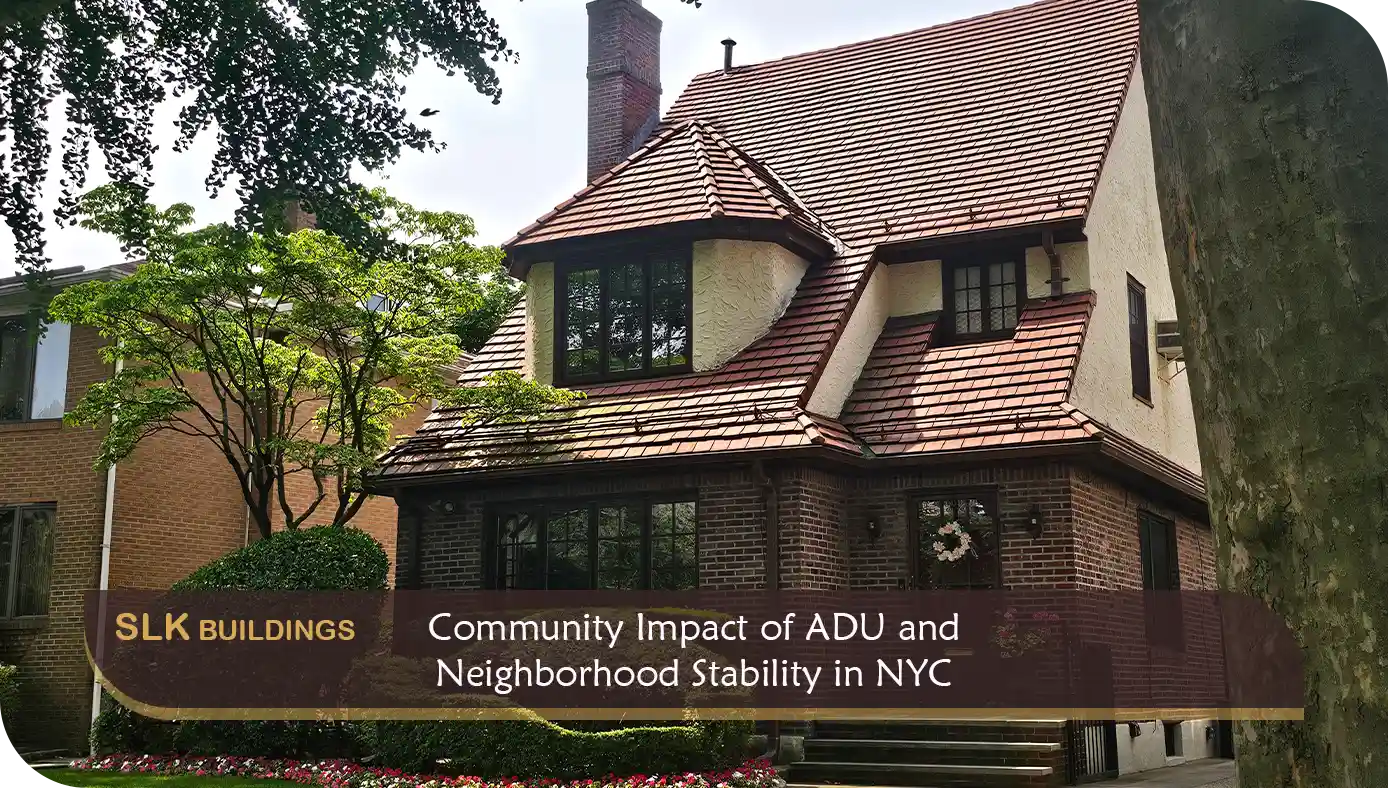Community Impact of ADU in NYC

ACCESSORY DWELLING UNIT
Community Impact of ADU in NYC
The debate surrounding Accessory Dwelling Units (ADUs) in New York City extends beyond housing supply and affordability; it delves into the very fabric of neighborhood dynamics and community stability. While ADUs offer potential solutions to housing shortages and economic challenges, their implementation can significantly impact the character, cohesion, and resilience of local communities.
RELATED ARTICLES
- Plus One ADU
-
What is ADU Housing? A Comprehensive Guide to Accessory Dwelling Units
-
Rental Income Opportunities: ADU Development in New York City
-
Multi-generational Living: ADU as a Solution for NYC Families
-
Design Considerations for NYC ADUs: Making the Most of Limited Space
-
New York City’s ADU Regulations: What Homeowners Need to Know
-
Unlocking New Opportunities: Exploring NYC DOB’s Accessory Dwelling Units (ADUs)
Community Impact of ADU and Neighborhood Stability in NYC
Why Choose SLK Buildings?
- Proven Track Record
- Diverse Clientele
- Integrated Services
- Client-Centric Approach
- Registered Representative
Call Us 212.888.3888
Proven Track Record: Over two decades of successful dealing with NYC Department of Buildings Rules and Regulations.
Diverse Clientele: Trusted by a broad spectrum of clients, from individual property owners, architects, engineers, attorneys, hospitality business owners, project management firms to large scale developers.
Integrated Services: A one-stop solution encompassing consultation, representation, documentation and compliance support. We manages the entire process, from determining applicability to Accessory Dwelling Unit qualification, filing your ADU application, coordinating with our Registered Architect or Professional Engineer partner, to the completion.
Client-Centric Approach: Tailored strategies that prioritized our clients’ unique needs and objectives.
Registered Representative: We are registered Filing Representative with Department of Buildings and Registered Representative with OATH (Office of Administrative Trials and Hearings) and familiar with the Rules of Practice for the OATH Hearings Divisions.
Enhancing Housing Affordability
One of the primary motivations behind promoting ADUs in NYC is to increase housing affordability by expanding the supply of rental units. By allowing homeowners to create additional living spaces on their properties, ADUs offer an opportunity to address the city’s chronic housing shortage while providing more affordable housing options for residents. This, in turn, can help mitigate displacement pressures and enable individuals and families to remain in their communities despite rising rents and property prices.
Preserving Neighborhood Character
However, concerns have been raised about the potential impact of ADUs on neighborhood character and aesthetics. Critics argue that the proliferation of ADUs could lead to overcrowding, strain local infrastructure, and erode the unique character and charm of NYC’s diverse neighborhoods. Additionally, the conversion of existing structures into ADUs may alter the architectural landscape and detract from the historic fabric of certain communities.
Fostering Community Resilience
Despite these challenges, proponents of ADUs highlight their potential to foster community resilience and social cohesion. ADUs can provide flexible housing options for multigenerational families, allowing grandparents to age in place or adult children to live independently while remaining close to their families. This intergenerational living arrangement can strengthen familial bonds, promote mutual support networks, and contribute to the overall well-being of residents.
Promoting Economic Opportunity
Moreover, ADUs can create economic opportunities for homeowners, particularly in low-income and marginalized communities. Renting out ADUs can generate supplemental income, allowing homeowners to afford rising property taxes and maintenance costs while improving their financial stability. Additionally, ADU construction and renovation projects can stimulate local economies, creating jobs and opportunities for small businesses in construction, design, and property management sectors.
Addressing Regulatory Challenges
To realize the full potential of ADUs while mitigating their potential negative impacts, policymakers must strike a balance between promoting housing affordability and preserving neighborhood stability. This requires comprehensive regulatory frameworks that address zoning, building codes, occupancy limits, parking requirements, and design standards. Moreover, public engagement and community participation are essential to ensure that ADU policies reflect the needs, values, and aspirations of local residents.
Community Impact of ADU and Neighborhood Stability in NYC. The integration of Accessory Dwelling Units into New York City’s housing landscape presents both opportunities and challenges for local communities. While ADUs offer a promising solution to housing affordability issues and economic challenges, their implementation must be carefully managed to preserve neighborhood character, foster community resilience, and promote social equity. By addressing regulatory challenges, engaging stakeholders, and promoting inclusive development practices, NYC can harness the potential of ADUs to create more vibrant, sustainable, and equitable neighborhoods for all residents.
Why Choose SLK Buildings?
Seeking Professional Guidance
Navigating New York City’s Department of Buildings (DOB) and NYC Housing Preservation & Development regulations for Accessory Dwelling Units can be complex and time-consuming. Homeowners and property owners are strongly encouraged to consult trusted architects, engineers, or legal advisors familiar with local zoning laws, building codes, and permit requirements. Partnering with experienced professionals like **SLK Buildings** ensures you stay compliant, avoid costly delays, and complete your ADU project with confidence. From initial feasibility studies and code compliance reviews to full DOB filing and expediting services, **SLK Buildings** is here to guide you through every step of the process.